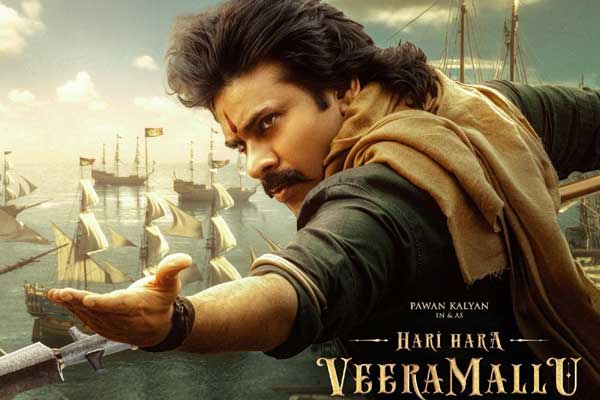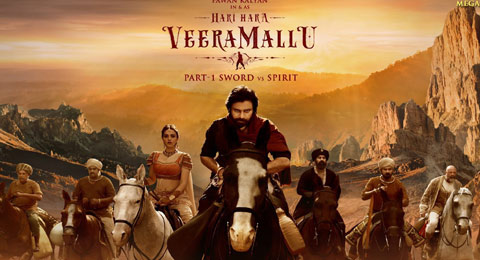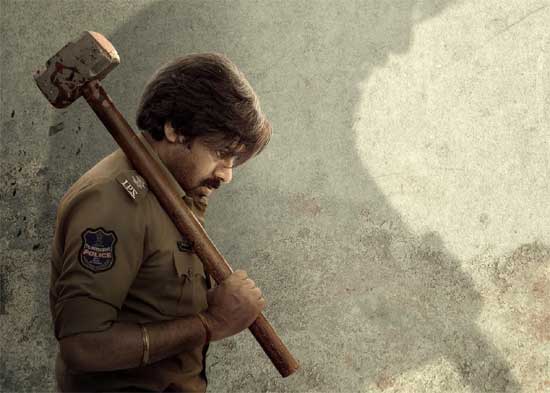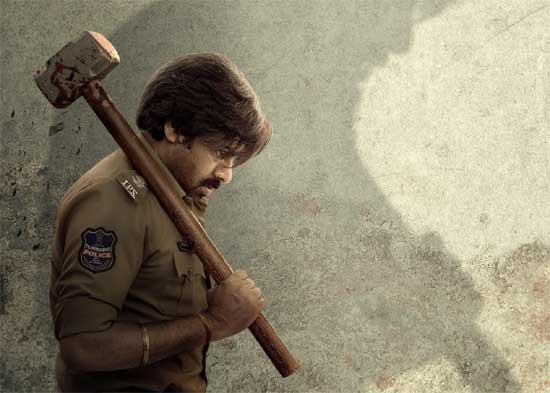Movie Name : Hari Hara Veera Mallu
Release Date : July 24, 2025
123telugu.com Rating : 3/5
Starring : Pawan Kalyan, Nidhhi Agerwal, Bobby Deol, Nassar, Sunil, Dalip Tahil, Adhitya, Sachin Khedekar, and others
Director : Jyothi Krishna – Krish
Producers : A. Dayakar Rao A. M. Rathnam
Music Director : M. M. Keeravani
Cinematographer : Gnana Shekar V. S.Manoj Paramahamsa
Editor : Praveen K. L.
Related Links : Trailer
After years of delays, Pawan Kalyan’s long-awaited period epic Hari Hara Veera Mallu: Part 1 – Sword vs Spirit has finally stormed into theatres. What once seemed like a shelved project has now re-emerged as one of the most talked-about cinematic events of the year. The buzz, initially subdued, gained tremendous momentum following Pawan Kalyan’s fiery pre-release speech and press interactions, pushing expectations to new heights. With the film now playing in cinemas worldwide, the stage is set for a grand historical spectacle. But does it rise to the occasion? Here is our review from the very first screening.
Story:
Set in the 1650s, Hari Hara Veera Mallu follows Veera Mallu (Pawan Kalyan), a Robin Hood-like figure who draws the attention of the King of Kollur. Tasked with a royal mission, Veera outsmarts the king and escapes with Panchami (Nidhhi Agerwal). Later, Qutub Shah (Dalip Tahil) recognizes his cunning and entrusts him with a far more significant task: to recover the legendary Koh-i-Noor diamond. Veera accepts and embarks on a journey to Delhi, where the diamond is held by Aurangazeb (Bobby Deol). However, beneath this mission lies a deeper motive. What is Veera’s true purpose? Who is Panchami, and why does Qutub Shah place his faith in Veera? Does Veera share a buried past with Aurangazeb? The answers unfold gradually, revealing the layers of Veera’s mysterious past.
Plus Points:
The most admirable aspect is the unwavering conviction of A. M. Rathnam, the presenter of the film. His belief in the story shines through and deserves heartfelt appreciation.
Pawan Kalyan brings gravitas to the role. His performance is composed and impactful, and his presence in the action sequences is electrifying. His dialogue delivery, particularly in emotionally charged scenes rooted in Dharma, resonates with sincerity and strength.
The action choreography is among the film’s biggest assets. The first half features three standout sequences: the Machilipatnam port fight, the Charminar battle, and the Kushti fight in Kollur. Each is executed with scale and flair. The second half includes a compelling action block in a Mughal-ruled village, which stands out for its raw intensity. These sequences are elevated by the energy of the stunts and deserve full credit for delivering cinematic adrenaline.
Nidhhi Agerwal, though given limited screen time, delivers her part with grace. Bobby Deol is menacing and intense, though his interactions with Pawan are brief in this chapter. Their eventual clash is clearly being saved for the sequel.
Supporting actors such as Sathyaraj, Raghu Babu, Sunil, Kabir Duhan Singh, and others serve their roles effectively.
Minus Points:
While the first half is largely gripping, the narrative loses steam in the second half. With much of the story deliberately held back for the sequel, the makers resort to filler scenes that test the audience’s patience. These segments, though passable in isolation, fail to carry the weight of the plot when anticipation is building for a monumental face-off between good and evil.
Several scenes in the latter half feel stretched, lacking urgency and narrative focus. The momentum dips noticeably, though the emotional action portions bring some much-needed elevation. The film ends with a dramatic cliffhanger that hints at greater stakes in the sequel.
Characters such as Sathyaraj’s and Nidhhi Agerwal’s are underwritten. Nidhhi makes a decent impression in the first half but fades into the background as the plot progresses.
The film’s biggest drawback is its visual effects. Key scenes, including the hill confrontation, suffer due to subpar CGI that breaks immersion. For a film of this scale, the VFX work is unexpectedly weak and undermines several powerful moments.
Technical Aspects:
Director Krish Jagarlamudi’s vision is evident throughout the portions he helmed. His historical detailing and narrative style lend depth to the film. The director Jyothi Krisna, who completed the remaining portions handles them decently, and it will be interesting to see how he shapes the next chapter.
The cinematography by Gnana Sekhar VS and Manoj Paramahamsa adds richness to the film’s period setting. M. M. Keeravaani’s musical score is a true backbone. His compositions lift the film in critical moments and enhance its emotional weight, particularly during action scenes.
Editing by Praveen KL is crisp in the first half but could have been tighter in the second. Production values are commendable overall, but the poor visual effects detract from the film’s otherwise ambitious scale.
Verdict:
On the whole, Hari Hara Veera Mallu is a decent cinematic experience. Pawan Kalyan anchors this period film with a performance that balances strength and restraint, while Keeravaani’s music amplifies its emotional and dramatic highs. The action sequences are a major highlight and bring energy to the narrative. On the downside, underdeveloped characters, underutilisation of Bobby Deol, the absence of a central hero-villain showdown, poor CG work, and a sluggish second half hold it back. That said, the movie still packs enough power to entertain. It lays the groundwork for an even bigger sequel. Watch it on the big screen this weekend.
123telugu.com Rating: 3/5
Reviewed by 123telugu Team




